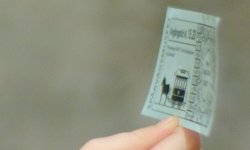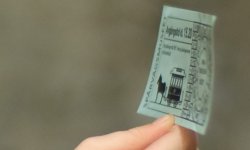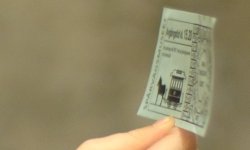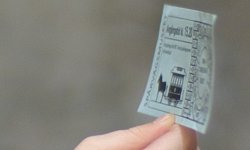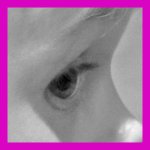mani
Well-known
I've downloaded some more demo RAW processors and decided to start a new thread to display the results of the unscientific test I performed on an image that was captured in difficult lighting conditions.
I loaded the image into each of the RAW processors, and did some basic tweaks such as zeroing noise reduction and correcting obvious misinterpretations in white balance. Otherwise, most of the settings were left at their defaults.
The images were exported from each processor with the widest-supported color gamut and 16 bit-color tiff, and then imported and converted to sRGB 8-bit psd files before output to jpeg at 80 quality.
I'll see if I can show some of the images inline - so this may cause the page to load slowly - but I think should be easier to show the results.*
The processors so far: Lightroom, Iridient's Raw Developer, Epson's own Camera RAW, and Silkypix.
I'd love to know how Aperture handles files - unfortunately my home laptop doesn't have the power for it at the moment.
* decided this wasn't such a good idea for people who don't want a massive download - so click on thumbs to see full versions
.
I loaded the image into each of the RAW processors, and did some basic tweaks such as zeroing noise reduction and correcting obvious misinterpretations in white balance. Otherwise, most of the settings were left at their defaults.
The images were exported from each processor with the widest-supported color gamut and 16 bit-color tiff, and then imported and converted to sRGB 8-bit psd files before output to jpeg at 80 quality.
I'll see if I can show some of the images inline - so this may cause the page to load slowly - but I think should be easier to show the results.*
The processors so far: Lightroom, Iridient's Raw Developer, Epson's own Camera RAW, and Silkypix.
I'd love to know how Aperture handles files - unfortunately my home laptop doesn't have the power for it at the moment.
* decided this wasn't such a good idea for people who don't want a massive download - so click on thumbs to see full versions
.
Last edited:
mani
Well-known
mani
Well-known
mani
Well-known
mani
Well-known
mani
Well-known
mani
Well-known
mani
Well-known
mani
Well-known
charjohncarter
Veteran
mani, I did this about a year ago with six processors. All did about the same job. All had different default color processing, so it was just personal taste there. The difference were really in the workflow and the global adjustments that each had. Unfortunately the RAW processors I used didn't have everything each and everything I wanted so now I use one for one type of processing and another or another for other types of processing. Basically, the people that design RAW processors can't please all of the people all of the time.
It seems that you are concerned about image quality. When I did this, I found no difference in image quality (definition). It was funny that I liked one processor quit well for digital image default processing in color. Its final image converted to tiff was just a little dark, but the colors were for me the richest and it seemed (but I could be wrong) that it pulled highlights and shadows out better than the others. So using the default setting I had to lighten just slightly every image.
It seems that you are concerned about image quality. When I did this, I found no difference in image quality (definition). It was funny that I liked one processor quit well for digital image default processing in color. Its final image converted to tiff was just a little dark, but the colors were for me the richest and it seemed (but I could be wrong) that it pulled highlights and shadows out better than the others. So using the default setting I had to lighten just slightly every image.
mani
Well-known
Hope to expand on this over time - and please note that these represent basic interpretations by the raw processors: RAW Developer and Silkypix are both demos, and I haven't had time to learn their finer points (that goes for Epson's developer also, insofar as I didn't try it before this week).
Most useful imo if you want to compare these tests is to open the same image from each of the processors in it's own window and place them side-by-side on your screen.
This survey arises from my frustration with the amount of detail that Lightroom loses by adding what looks almost like an extra AA filter to the image - even when all noise reduction is set to zero! Take a look at the Iridient RAW dev b&w version of the eye next to the Adobe version to see some of what I mean.
Most useful imo if you want to compare these tests is to open the same image from each of the processors in it's own window and place them side-by-side on your screen.
This survey arises from my frustration with the amount of detail that Lightroom loses by adding what looks almost like an extra AA filter to the image - even when all noise reduction is set to zero! Take a look at the Iridient RAW dev b&w version of the eye next to the Adobe version to see some of what I mean.
LCT
ex-newbie
Did you compare Epson Photoraw 1.30 to Silkypix 3.0?charjohncarter said:... I found no difference in image quality (definition)...
Pics 1 and 2: Silkypix (FF and 100% crop)
Pics 3 and 4: Epson (FF and 100% crop)
Noise reduction and sharpening disabled of course.




charjohncarter
Veteran
As RAW has no camera generated image editing. It is done by the RAW converter, and even with stuff turned off it has to do some default processing or you wouldn't get an image. I'll bet with messing around with the sharpening settings you could do just the opposite with those two converters.
If you read reviews on dpreview.com you will see that all cameras in jpeg have different image quality. Some cameras oversharpen (in camera) so they can be judged a having higher quality images than another. While other cameras leave the sharpening in jpeg up to you (to not give you an oversharpened image), and get a undeserved bad review at that site. This is what RAW converters do, too.
But to answer you question no, Epson and Sliky Pix were not on my list.
If you read reviews on dpreview.com you will see that all cameras in jpeg have different image quality. Some cameras oversharpen (in camera) so they can be judged a having higher quality images than another. While other cameras leave the sharpening in jpeg up to you (to not give you an oversharpened image), and get a undeserved bad review at that site. This is what RAW converters do, too.
But to answer you question no, Epson and Sliky Pix were not on my list.
Last edited:
LCT
ex-newbie
Now Capture One 4.0, FF and 100% crop.
Pics look softer than Epson's but show less grain as well so they prove easier to sharpen in PP. Even with sharpening, C1 pics have not the grainy look of Epson's though. I wonder if that grainy look does not explain the film-like rendering of Epson pics somehow.


Pics look softer than Epson's but show less grain as well so they prove easier to sharpen in PP. Even with sharpening, C1 pics have not the grainy look of Epson's though. I wonder if that grainy look does not explain the film-like rendering of Epson pics somehow.


charjohncarter
Veteran
It's strange the algorithms these designers choose. But I'm sure they know what their average customer wants. Example, P&S digitals have hotter (more saturated) colors than DSLRs straight out of the camera (jpeg). I guess RAW converters try do get what the customers wants because they figure the customer doesn't want to mess with all those sliders. I know I don't want to.
Of the three LCT has shown I like Capture One, but I'm sure I would get an argument on that.
Of the three LCT has shown I like Capture One, but I'm sure I would get an argument on that.
mani
Well-known
Hi guys - thanks for the responses and for the Capture One example.
In all these cases it's very hard to try to make some sort of 'objective' judgement of which Raw developer is 'best'. I personally prefer the color rendering of one of them over the others - but obviously the default color render is only a starting-point, if one wants to 'tweak' it.
What I don't like, however, is how much the developers differ in terms of detail rendition.
Most particularly the way that Lightroom posterizes areas of fine detail even with all noise suppression switched off. Why does it do that?
Here's what I mean in a 200% enlarged comparison between the Iridient Raw Developer b&w version of my nephew's eye, and the Lightroom version. (I know that blowing-up images on-screen to 200% is super-pixel-peeping - but I just wanted to make the comparison clear).
The Raw Developer has detail where LR simply has irrecoverable smudge. What the heck has LR done to that fine, film-like detail?
(Incidentally, I should add that LR has imo by far the best and most intuitive interface and usability - so why is it doing this to images?)
In all these cases it's very hard to try to make some sort of 'objective' judgement of which Raw developer is 'best'. I personally prefer the color rendering of one of them over the others - but obviously the default color render is only a starting-point, if one wants to 'tweak' it.
What I don't like, however, is how much the developers differ in terms of detail rendition.
Most particularly the way that Lightroom posterizes areas of fine detail even with all noise suppression switched off. Why does it do that?
Here's what I mean in a 200% enlarged comparison between the Iridient Raw Developer b&w version of my nephew's eye, and the Lightroom version. (I know that blowing-up images on-screen to 200% is super-pixel-peeping - but I just wanted to make the comparison clear).
The Raw Developer has detail where LR simply has irrecoverable smudge. What the heck has LR done to that fine, film-like detail?
(Incidentally, I should add that LR has imo by far the best and most intuitive interface and usability - so why is it doing this to images?)
Attachments
Last edited:
charjohncarter
Veteran
Mani, why does it do that? Because all of these converters have a set of adjustment built in. Adobe decided this was best. It's just like your digital camera deciding in camera what a jpeg should look like. I overdid it, but here is a shadow and highlight treatment to the Adobe LR sample.
Attachments
mani
Well-known
charjohncarter said:Mani, why does it do that? Because all of these converters have a set of adjustment built in. Adobe decided this was best. It's just like your digital camera deciding in camera what a jpeg should look like. I overdid it, but here is a shadow and highlight treatment to the Adobe LR sample.
Thanks for the replies and for the image experiment!
Yep - it's frustrating that they've made that 'baseline' noise-reduction decision for the user, instead of allowing him/her the freedom of choosing for themselves.
Also the major thing that had disappointed me about the R-D1s was that I had the impression the files were on the soft side - but now I realize that Lightroom's files are on the soft side; the camera files are tack-sharp! All those great lenses and megapixels going to waste, imho.
charjohncarter
Veteran
You have to become very skilled with the sharpening tool on your converter. I have all these converters and many editing programs. And it seems the sharpening tools are slightly different on each one. I even think the unmask sharp tool on LightRoom is a little different than on Photoshop. But that is my opinion. You are right the RAW file is sharp, but converted to visual form in most converters it is soft. The further or completed sharpening is up to you.
LCT
ex-newbie
Curious indeed as the Adobe Camera Raw plug-in of Photoshop Elements 4.0 is not that soft.mani said:...now I realize that Lightroom's files are on the soft side; the camera files are tack-sharp! All those great lenses and megapixels going to waste, imho.
Now i would not say that the camera files are very sharp to be honest.
Compared to Leica's (M8) and some Nikon's (D70, D2H) they are clearly softer.
Matter of AA filter i guess.
Anyway, looks like the Epson converter's and plug-in's files are quite different to others.
Here small crops from the Epson (pic 1) and C1 (pic 2) converters after PP.


Share:
-
This site uses cookies to help personalise content, tailor your experience and to keep you logged in if you register.
By continuing to use this site, you are consenting to our use of cookies.




